Philodendron elegans or Skeleton Key Philodendron is a rare tropical climbing plant native to Colombia. It has stunning or elegant, deeply lobed green leaves that resemble palm fronds.
Did you know that Skeleton Key Philodendron is easy to care for or low maintenance and helps purify the air? Also, it will add that breath-taking tropical appeal to your home.
We have care needs, identification, and how P. elegans differs from Philodendron mayoi, tortum, or radiatum. And if you want to buy it, we have prices and places to find it on sale, including in the UK, the US, Canada, and Australia, like Etsy.com, and eBay.
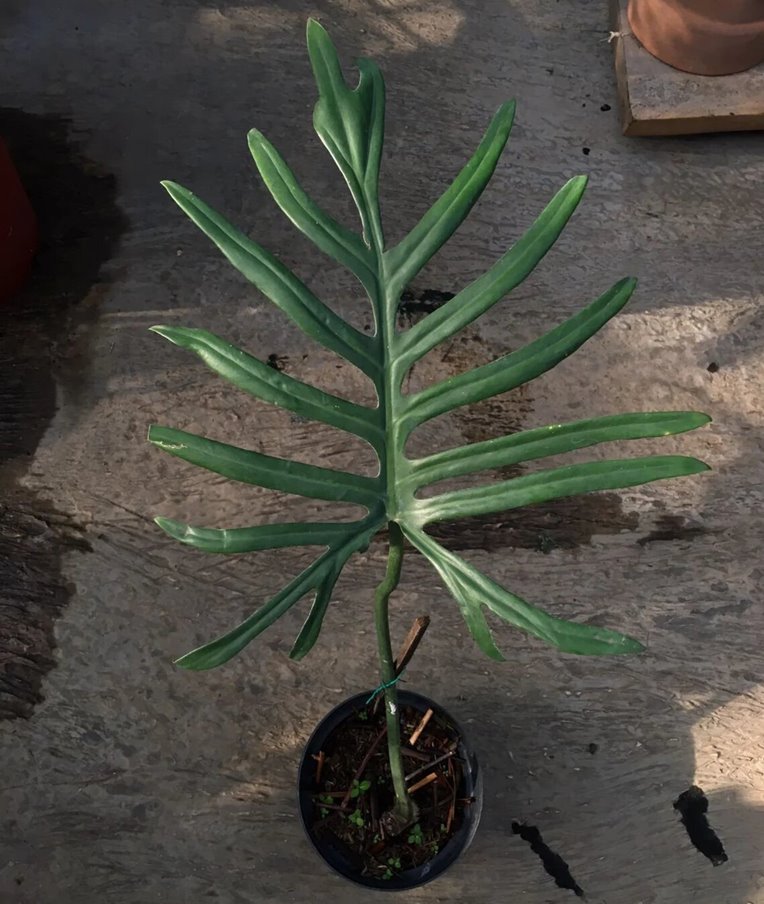
Contents
- Overview
- History and origin
- Description and identification
- 1. Growing habits
- 2. Size and growth rate
- 3. Leaves
- 4. Stems
- 5. Flower
- Philodendron elegans vs. mayoi
- Philodendron elegans vs. tortum
- Philodendron elegans vs radiatum
- Philodendron elegans care
- 1. USDA hardiness zone
- 2. Temperature
- 3. Humidity
- 4. Light needs
- 5. Best soil mix
- 6. Watering
- 7. Fertilizer
- 8. Pruning
- 9. Repotting
- 10. Stake or support
- Philodendron elegans propagation
- Problems and issues
- 1. Pests and disease
- 2. Root rot
- 3. Leaf discoloration, curling, and your plant drooping
- Where to buy Philodendron elegans
- Frequently asked questions?
Overview
- Scientific name: Philodendron elegans
- Section: Polytomium section
- Family: Araceae (aroids or arum family)
- Common names: Skeleton Key Philodendron, Skeleton Aroid, or Finger-leaf philodendron
- Native habitat: Colombia
- Toxicity: It is toxic to dogs, cats, and humans since it has insoluble calcium oxalates in its sap. When chewed, it will cause severe oral irritation and a burning feeling. Also, lips, mouth, or tongue will swell or turn red. Additional signs include swallowing difficulties, loss of appetite, and drooling.
- Growth rate: Slow
- Care level: Low maintenance
History and origin
Philodendron elegans, described in 1913 by a German botanist Kurt Krause (1883-1963), is an accepted species in Colombia. Its epithet elegans is Latin, which means elegant, i.e., the plant looks elegant. Some call it Skeleton Key Philodendron due to its key or finger-like narrow lobes resembling a leaf’s skeleton.
Many people confuse it with a few other species like Philodendron tortum and Philodendron radiatum that closely resemble it, but with some differences, which we will look at later.
Description and identification
1. Growing habits
Philodendron elegans is a robust climbing tropical plant native to the Colombian Pacific Andes, where it grows at 1640-6561 feet (500 to 2000m) above sea level. But some sources (1) list it as from Brazil too.
This aroid grows as a hemiepiphyte. A hemiepiphyte has both an epiphyte (on trees) and on the ground (terrestrial) growth phases.
Lastly, adult and juvenile plants look different, with subadult plants resembling their adult counterparts. So, it is possible to have different-looking leaves in the same plant. The image below will help clarify this fact.
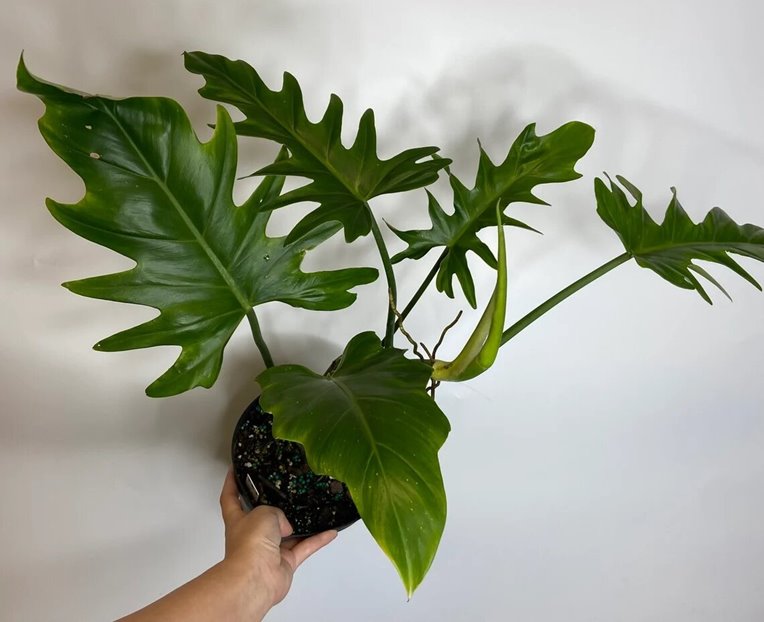
2. Size and growth rate
Philodendron elegans has a slow growth rate. However, this elegant and charming plant can get quite large, i.e., up to 33 feet (10m) in the wild or natural habitat. Inside your home, expect it to grow up to 6 to 8 feet tall. But it would help if you gave it a place to climb – moss pole, totem, trellis, etc.
3. Leaves
A baby plant will have elongated oblong leaves. But as it grows into the juvenile stage, it will start having shallower, poorly formed lobes.
On the other hand, Mature Philodendron elegans plants have larger (15.8-27.5 inches long by 11.8-19.7 wide) thinly leathery pinnatipartite (split) green leaves with an oval to oblong outline.
These leaves have 6 to 9 pinnae per side and bluntly sunken primary veins. The anterior lobes have a single strong lateral vein, while in the posterior region, 3-4 veins join to form a barely denuded short rear rib.
Lastly, the nearly round green petiole with pale green spots is up to 23.6 inches long, attenuates towards its apex, and has a sheath at the base.
4. Stems
Stems are robust and have relatively long internodes, i.e., up to 6 inches, and get fairly thick, with diameters reaching about 4 inches in mature plants.
Also, the stems have cataphylls that shortly fall after the leaf forms (deciduous) and aerial roots on nodes.
5. Flower
Mature Philodendron elegans will produce inflorescences. These inflorescences have a nearly round peduncle that tapers towards its base, a spathe (surrounding bract), and a spadix (bears tiny male and female flowers).
The slightly constricted spathe is greenish to greenish-pink outside and dirty dark purple on the inner side.
What about the spadix? It is somewhat shorter than spathe and has a bottommost female, middle sterile male, and top fertile male portions.
Philodendron elegans vs. mayoi
Philodendron mayoi is native to Brazil. This creeping, terrestrial, or climbing plant has deeply split or cut leaves and resembles elegans. However, it should be easy to tell the two aroids if you consider leaves, petiole, and flowers.
Philodendron mayoi’s leaves have fewer, more deeply cut (pinnatifid) lobes than P. elegans. Also, it has reddish warty growths on the petiole and a whitish spathe inside, while P. elegans petiole is smooth, and the spathe is dark purple inside.
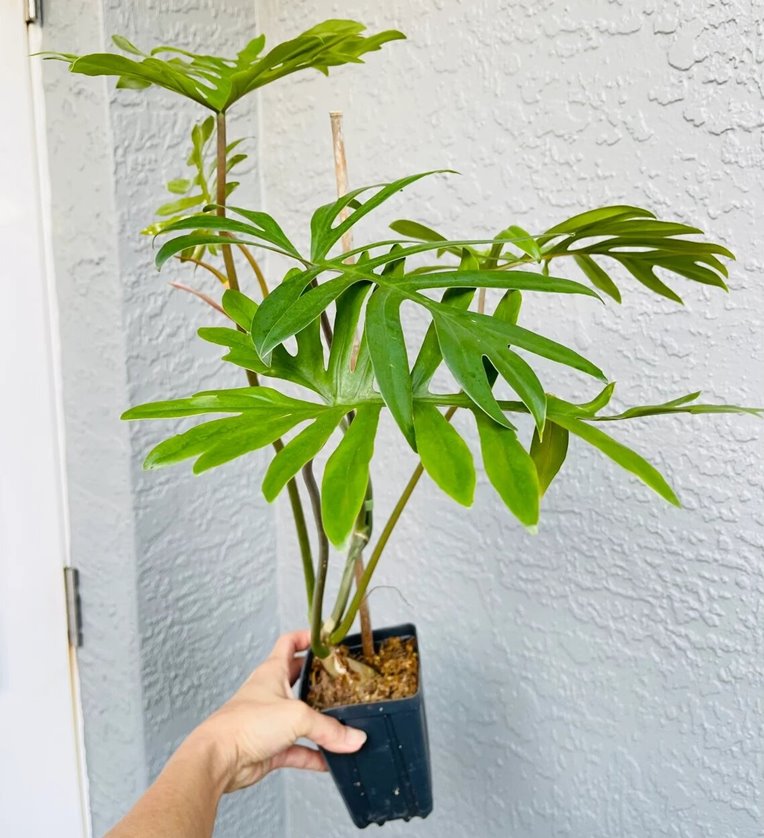
Philodendron elegans vs. tortum
These two Philodendron species have leaves with deeply cut or pinnatifid leaves; some people may have trouble telling them apart. How do they differ, or how do you separate one from the other? Consider leaves and petioles.
Philodendron tortum has relatively far-spaced lobes with cuts extending nearer to the midrib than P. elegans. Also, its midrib has narrow, deep grooves (sulcate), while P. elegans doesn’t have these grooves.
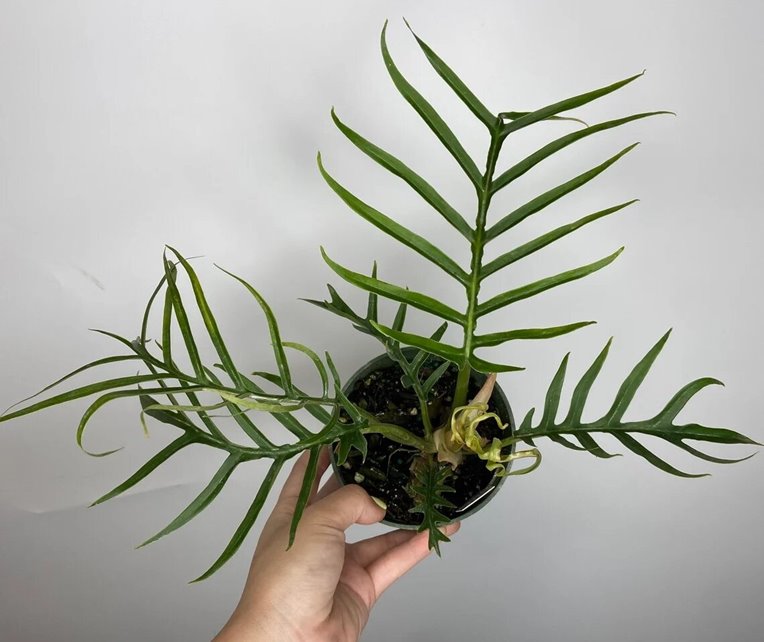
The other difference is that P. elegans has light green spots on the petiole and a sheath at the base, while P. tortum has fine purple-colored linear streaks or striae, is sulcate (has deep narrow groves) and not sheathed.
Philodendron elegans vs radiatum
Philodendron radiatum is native to Mexico to northern Colombia. It has triangular-oval outlined shallowly to deeply lobed leaves and resembles P. elegans.
However, Philodendron elegans is smaller than Philodendron radiatum. Also, its leaves have relatively narrower lobes than sinuses in most cases, while the lobes are always wider than the sinuses in P. radiatum.

The other distinction is that P. radiatum has a heart-shaped lobed at the base without a posterior rib. In contrast, P elegans has 3-4 lowermost veins joining together to form a barely denuded rear rib.
Lastly, if you consider their petiole, you will notice that it is broadly flattened in P. radiatum while it attenuates in P. elegans.
Philodendron elegans care
Philodendron elegans grows best in a warm, humid area with bright indirect light. Its soil should be airy, well-drained, and rich in organic matter. Water it when the top 1-2 inches of the potting feel dry. Also, it needs pruning, feeding, a moss pole, etc.
Here is more on Philodendron elegans care:
1. USDA hardiness zone
P. elegans USDA zone is 10-11. This aroid is not frost-hardy. Also, prolonged freezing will damage it. Only individuals in these zones can grow it outdoor all year.
2. Temperature
The ideal temperature should be 65 to 85 degrees Fahrenheit (18-29°C). But they can tolerate a bit lower temperature. However, they will grow slowly, and at 50°F or below, your plant won’t be growing. So, if it is outside, move it indoors.
Also, avoid sudden temperature changes as they will stress this plant, and don’t place it near a heat source like a radiator, furnace place, room heating vent, heat emitting appliances, etc.
Lastly, avoid cold drafts as they may cause wilting, leaf scorch, yellowing, browning, or looking faded, whitish, etc.
3. Humidity
Philodendron elegans loves humidity, with the ideal level being 60% or more. But it can grow well in average household humidity, i.e., in the 40s to 50s.
However, extremely low humidity will make leaves feel dry and have brown tips, edges, or patches. Also, your plant may droop or wilt, have yellow leaves, grow slowly, look dull, etc. So, if your humidity is too low, raise it via these means:
- Misting your plants: Offers a short-lived solution and is ideal when the humidity isn’t too low.
- Pebble tray: It is a relatively reliable way to raise humidity. It involves placing some pebbles in a tray, standing your plant pot on the stones, and adding water to a level that doesn’t reach the planter. As the water evaporates, it will raise the humidity around your plant.
- Move plants to humid rooms: If your bathroom or kitchen is well-lit, you can move these plants to these rooms as they are often more humid.
- Group your plants: It helps raise humidity by creating a microclimate.
- Buy a humidifier: The surest way to raise humidity is by buying a humidifier. Select any good cool mist brand. The 2.2L AquaOasis™ Cool Mist Humidifier is perfect for medium rooms. It is quiet and can run for up to 24 hours per refill. Also it is affordable and Amazon's best seller.
4. Light needs
P. elegans needs bright, indirect light. However, it can still thrive in medium indirect light.
Too little light will make the plant grow slowly, have smaller, paler new growth and be leggy. Please consider investing in a grow light.
On the other hand, direct sunlight, except for the early morning sun on the east-facing window, will cause sunburn. Leaves will have brown tips and edges and look washed out, paler or yellowish. So, place your plant where the direct sun will not hit it.
5. Best soil mix
Philodendron elegans requires a well-drained and aerated soil high in organic matter. An ideal one should be slightly acid to neutral, i.e., pH 6.1-7.3.
This aroid is not fussy as it can grow even in sphagnum moss alone. But we recommend buying (See Etsy.com) or making an aroid mix.
To make an aroid mix, add perlite, coco coir (or peat moss), bark chips, and compost (or worm castings) to your potting soil.
6. Watering
This plant loves moist soil, not bone dry or soggy. So, we recommend you water this plant when the top few inches or up to 1st knuckle of your finger feels dry. Or, if you have a soil moisture meter like XLUX (one of the best brands) water when the reading is three or less.
Don’t follow a routine. Why? Because water requirement varies with conditions (temperature, humidity, and light), pot type or size, soil mix, etc.
When watering, thoroughly saturate the soil until excess water flows from drainage holes. Discard any that collects on the saucer.
Lastly, avoid overwatering your plant as it will cause root rot. Also, don’t wait until your plant starts drooping.
7. Fertilizer
Besides a potting mix rich in organic matter, you can feed your P. elegans with an all-purpose liquid indoor houseplant once a month during growing months only. Use half-recommended dosages and go for a balanced formula.
I use Miracle-Gro Indoor Plant Food (Liquid) and feed once in two weeks . I add 4 pumps to a quart of water and use the solution to feed your plant.
However, it doesn’t always have to be balanced but should have all the necessary nutrients. Also, you can buy a slow-release formulation for potted plants.
I have used Osmocote Smart-Release Plant Food Plus Outdoor & Indoor on my Philodendrons. It lasts for up to four months. Apply at a rate of a teaspoon per 64 square inches and work it into the soil, 1-3 inches deep.
Lastly, flush your potting mix at least once every three months to avoid salt accumulation on the soil for those who opt for inorganic fertilizers.
8. Pruning
It doesn’t require much pruning except removing dead, damaged, or diseased leaves or parts. Use sterilized gardening shears. Also, you can cut back a few stems to control growth, shape, and size in early spring.
9. Repotting
Repotting is after 2 to 3 years or when your plant is rootbound. Tell a tale that signs your plant has outgrown its current pot, including roots growing from drainage holes and spiraling inside the planter. Others are slow growth, smaller leave, defoliation, yellowing or browning of leaves, leggy plants, etc.
When repotting, go for a pot 2-3 inches wider in diameter than the current one.
10. Stake or support
Since it is a climber, provide and train this aroid on a moss pole, trellis, totem, or any other vertical support.
Philodendron elegans propagation
Philodendron elegans propagation is via stem cutting (in water or soil) and air layering. Seeds are the other way. However, they are rare or hard to find.
Your stem cutting must have at least a node, i.e., the knobby part where leaves attach and grow aerial roots. Kindly note that you cannot use aerial roots, nodeless stem, or leaves with petioles.
On the other hand, to use air layering, wrap moist sphagnum moss on a node of the selected stem (which you will later cut) while still attached to the mother plant. Keep it moist and aerated. The node will begin growing, and when long enough, cut the branch off and plant it.
Problems and issues
As you grow this lovely aroid, some issues it may have include:
1. Pests and disease
Your plant may have pests, especially thrips, mites, mealybugs, and scale insects. However, they are uncommon, and you can manage them with insecticidal soaps, neem oil, or horticultural spray oils.
Similarly, disease, i.e., leaf spots and blights (bacterial and fungal), are uncommon too. Just make sure you practice proper sanitation and isolate new plants.
2. Root rot
Overwatering is the prime suspect of root rot. But it may be a poorly draining or oversized pot. If your plant has some healthy roots, save it by immediately repotting. As you do so, don’t forget to cut any decayed portions.
3. Leaf discoloration, curling, and your plant drooping
More often, leaf discoloration, curling, or plant drooping indicate an issue with care or growing conditions. But it may be pests or diseases. Here are the probable reasons for each of these issues.
| Issues | Possible causes |
| Leaves turning yellow | Most likely an overwatering issue. Other possible causes include underwatering, cold drafts, too much or little light, lack of nutrients, and repotting/transplant shock. However, some yellowing as leaves age is normal. |
| Brown tips and edges | Low humidity, too much light, underwatering, heat stress, and fertilizer burns are often to blame. But it may be plant shock, or your plant is rootbound, etc. |
| Brown or black spots | Pests and disease |
| Leaves curling or plant drooping | The likely reasons are underwatering, too much light, low humidity, plant shock, and heat stress. But anything that speeds water loss or prevents absorption may be like root rot or overwatering. |
Where to buy Philodendron elegans
The best place to buy Philodendron elegans is Etsy.com. It has vendors from not just the US but also Canada, Australia, New Zealand, the UK, etc. Alternative places to Etsy.com are eBay, Facebook, and Instagram.
Besides the above places, below are more locations in the US, Europe, Asia, and Asia where you should try looking for this plant and their respective prices.
The US
- Plant Co (New Orleans, LA) - $110.00
- Ecuagenera USA Corp. (Apopka, FL) - $50.00
- The Lush vine (City of Decatur, GA) $275.00
- Glasshouse Works greenhouses (Stewart, OH) - US$45.00
- Black Jungle Terrarium Supply (Greenfield MA) - $55.00
- Brian’s Botanicals (Shepherdsville, KY) $44.00
- I’m Planty Fancy (Traverse City, MI) -$80.00
The UK and Europe
- Grow Tropicals (Leeds, England) - £50.00
- Ecuagenera Europe (Schloß Holte-Stukenbrock, Germany) - €50.00
- Claessen Orchids and Plants BV (Nederweert-Eind, Netherlands) - €49.95
Australia (Price in Australian dollars)
- Plants Direct Nurseries (VIC, Australia) – A$24.95
- Barrowby Green Indoor Plant Centre (VIC, Australia) - A$13.00
- Chalet Boutique (Tasmania Australia) - A$69.95
More places
- Ecuagenera (Ecuador) - US$35.00
- Aroid Sale (Jawa Timur, Indonesia) - US$70
- Aroid Nursery (Jawa Timur, Indonesia) - US$65
- Carousell (Singapore) - S$78
Last but not least, you can also try googling “Philodendron elegans for sale” or “Skeleton Key Philodendron for sale” for more places.
Frequently asked questions?
Yes. Philodendron elegans is a rare or uncommon houseplant that only a few vendors have. We haven’t seen it with any of the big box stores or largescale growers. We also highly doubt you will find it at your local tropical vendors. Even online, only a handful of vendors have it.
The price of Philodendron elegans ranges from $40 to $120 depending on where you buy it and the plant sizes. However, in Australia, this lovely aroid sells for slightly lower prices.
Since they happen via cell mutation, it is possible to have variegated Philodendron elegans. However, such a mutation is rare, and we haven’t seen any vendors with a variegated form of

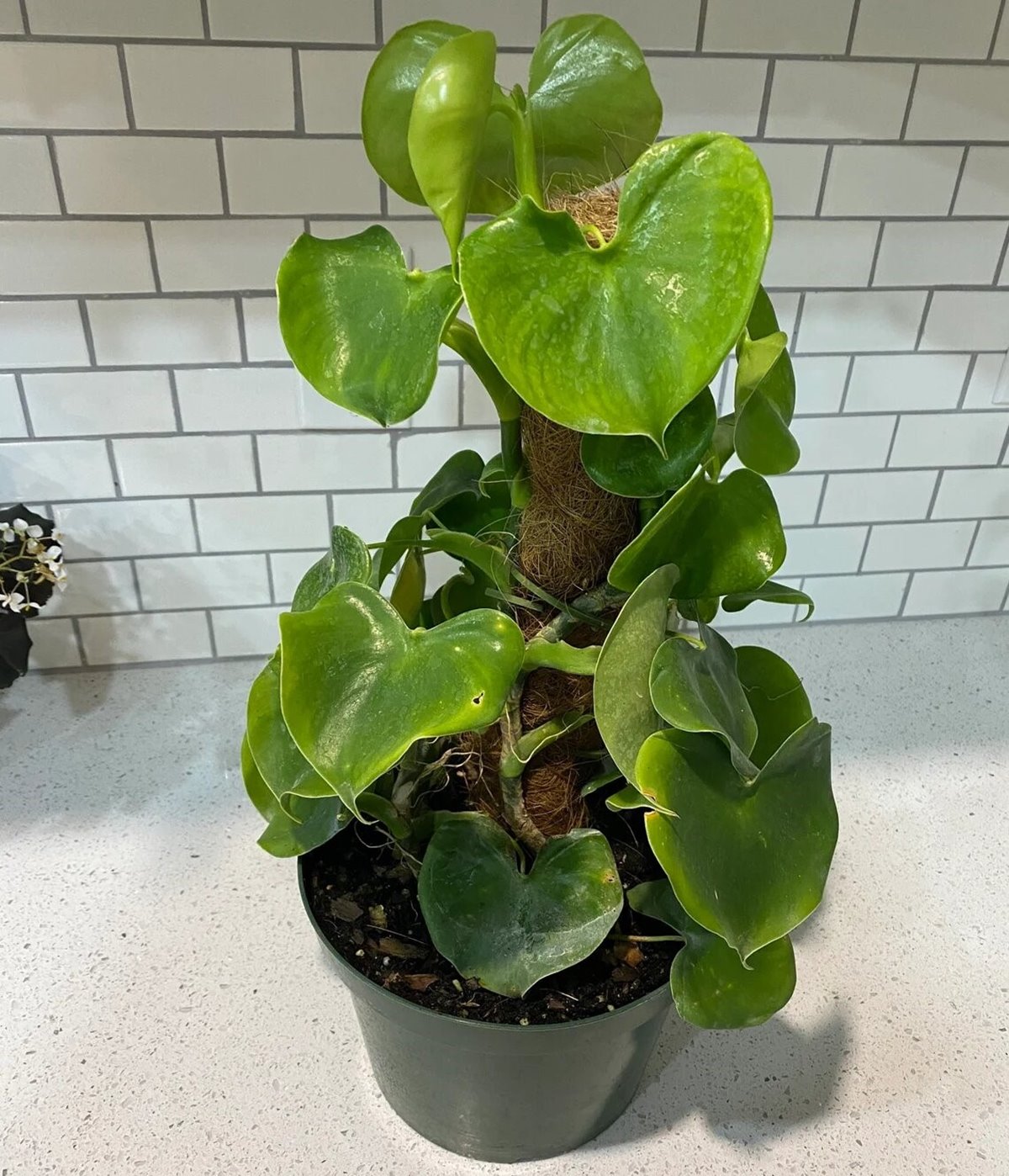
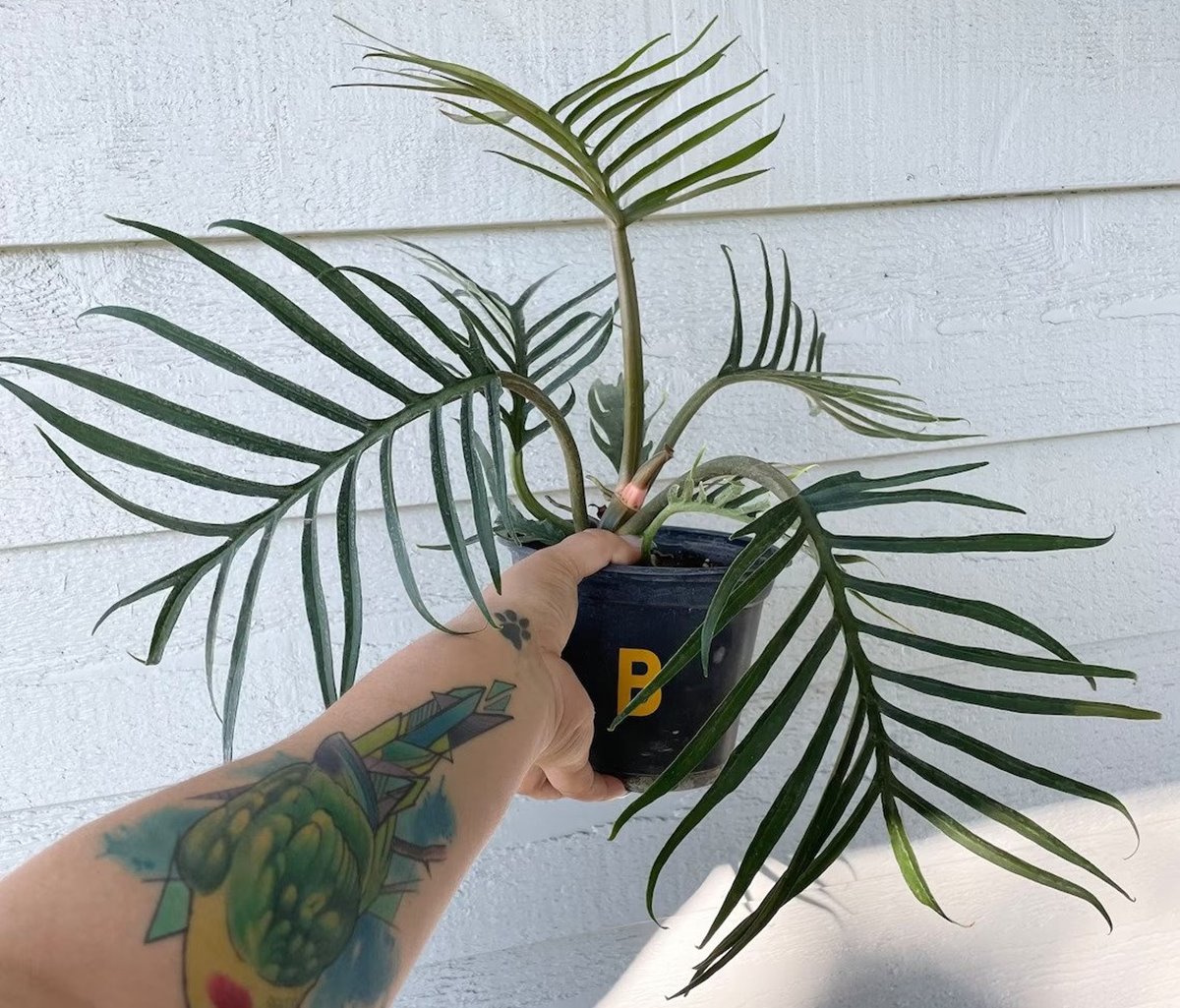

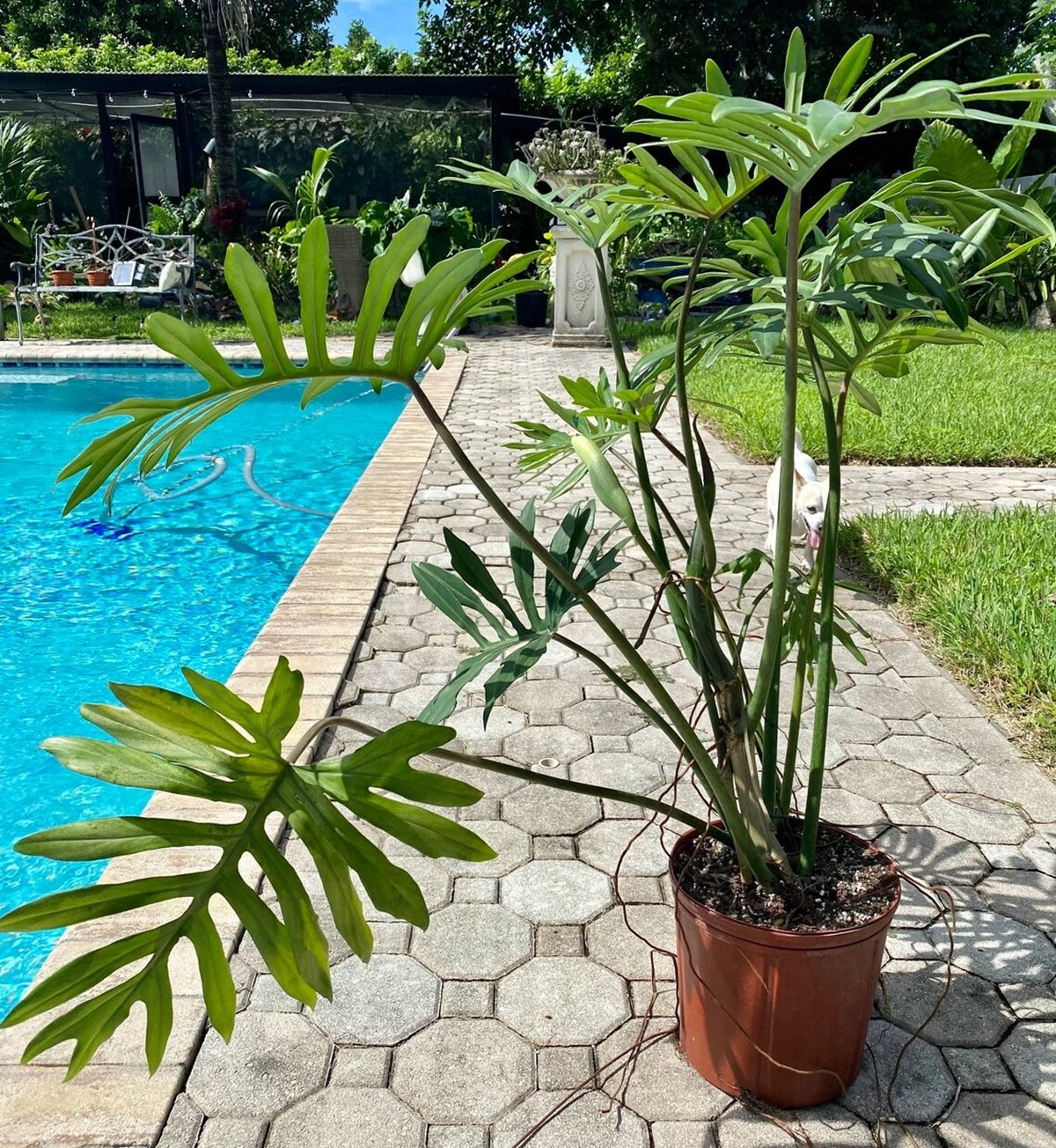
Plantipus
good article,
thanks for the information about Philodendron Elegans.